Our 2010 blog entry by James Urban, FASLA, on the topic of how deep tree roots grow is consistently one of our most popular. Obviously there is a curiosity about this topic and a need for useful data about it. But the original post is a little technical and not as image-heavy as we’d like. So today we’re bringing you a new and improved version of the original post, with additional pictures and more simplified explanation of the factors that really influence how deep tree roots grow.
How deep tree roots grow depends on three simple factors. To answer this question I contacted Jim Urban, FASLA, a noted tree and soil expert. He contributed to the following post.
Roots require three things: water, oxygen, and soil compaction levels low enough (or with void spaces sufficiently large enough) to allow root penetration. If all these conditions are met, roots can grow to great depths. Under ideal soil and moisture conditions, roots have been observed to grow to more than 20 feet (6 meters) deep.
Early studies of tree roots from the 1930s, often working in easy-to-dig loess soils, presented an image of trees with deep roots and root architecture that mimicked the structure of the top of the tree. The idea of a deeply-rooted tree became embedded as the typical root system for all trees. Later work on urban trees that were planted in more compacted soils more often found very shallow, horizontal root systems. Urban foresters have successfully spent a lot of energy trying to make people understand that tree roots have a basically horizontal orientation, to the point that even many tree professionals now believe that deep roots in trees are a myth. The truth lies somewhere in between deep roots and shallow roots.
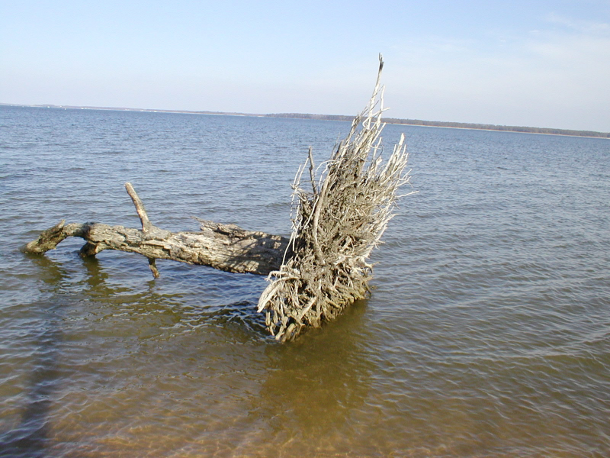
This totally horizontal root system formed on top of poorly drained soils. Photo courtesy of Miles Barnard.
Simply put, by Jim: “Trees are genetically capable of growing deep roots, but root architecture is strongly influenced by soil and climate conditions.”
The most typical limitations to tree rooting in urban areas are soil compaction and poor drainage. These are often related, with a compaction layer creating a poorly-draining hard pan. This results in a perched water layer that restricts roots. Hard pans and perched water tables can also be found in nature. In fine-grained clay soils and fine-grained silty soils, pore space — and therefore and rooting depth — is often limited. Since these conditions are quite common in urban areas, shallow rooted trees are often seen as “typical.”
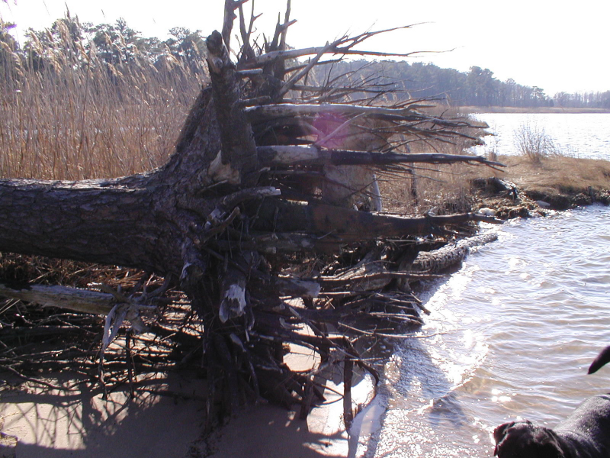
Six foot long sinker or striker roots in well-draining soils. Note the remnant of horizontal roots at the trunk flare. Photo courtesy of Miles Barnard.
Orjan Stahl, a tree researcher in Stockholm, made an exhaustive study of over 500 trees that had root and utility conflicts. He regularly found roots at depths of 7 to 9 feet (2.1 to 2.7 meters) and the deepest root he encountered was at 23 feet (7 meters). In their 1991 paper, “On The Maximum Extent of Tree Roots,” E.L. Stone and P.J. Kalicz summarized previous root depth studies of 49 genera and 211 species growing in a wide variety of soil types. They found numerous examples of trees reported to be growing roots to over 33 feet (10 meters), and one report of a tree that grew roots to a depth of 174 feet (53 meters). Clearly, a tree’s ability to grow deep roots is not a significantly limiting factor in soil design.
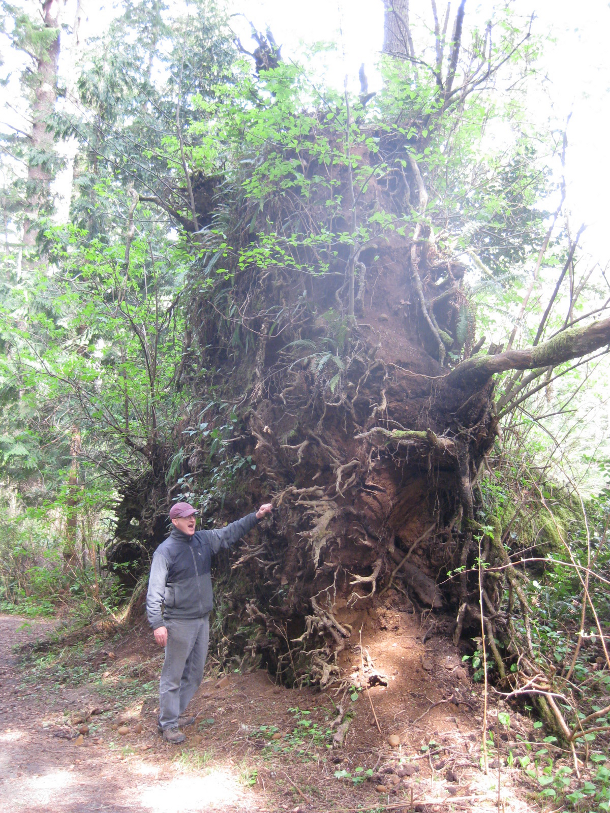
4 foot deep rooting in loam soil that was on top of a hard pan. Photo courtesy of James Urban.
Given all this, and the unpredictable site constraints of the urban environment, urban trees need flexible solutions that can enable roots to grow out or down. In some sites, increasing soil depth is not a problem, while expanding may be limited by other constraints. The opposite can also be true. This is why the Silva Cell system is flexible in all three dimensions to respond to different spatial limitations.
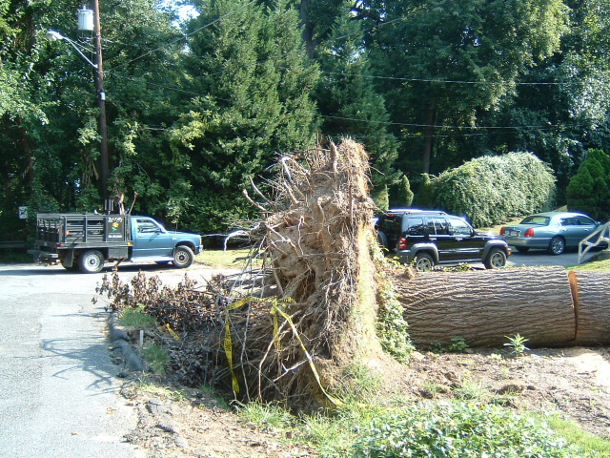
These roots go at least 4 feet deep. This tree fell over after the irrigation contractor installed a line on the up wind side. Photo courtesy of James Urban.
The designed maximum depth of the system is 45 inches (1150mm). This is a strategic compromise between the system’s structural requirements, soil volume, and cost and constructability issues. The Silva Cell was designed to provide a deep soil volume because roots will grow to these depths. For urban sites where deep excavation is limited, one- or two-layer systems can provide the same total soil volume across a shallower profile.
Two other factors are absolutely critical to the ability of roots to grow though the entire soil profile: the type of soil that is used, and designing the system to permit adequate water into and to drain out of the soil. These features must be designed to reflect the environment in which the Silva Cells are to be placed, the types of soil resources available and the project performance expectations of trees, soil and water.
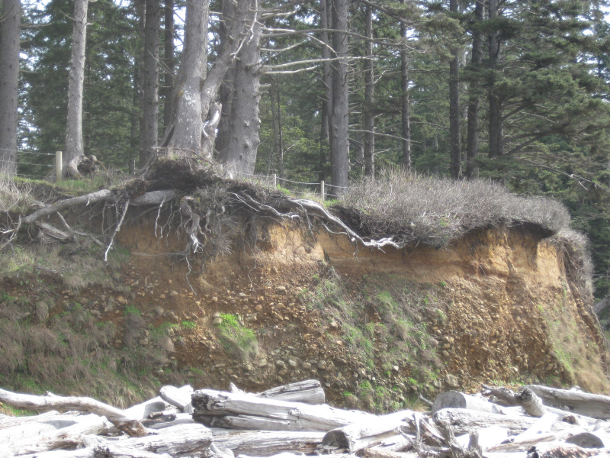
Horizontal rooting to about 4 foot depth in loam soil over river wash till. Photo courtesy of James Urban.

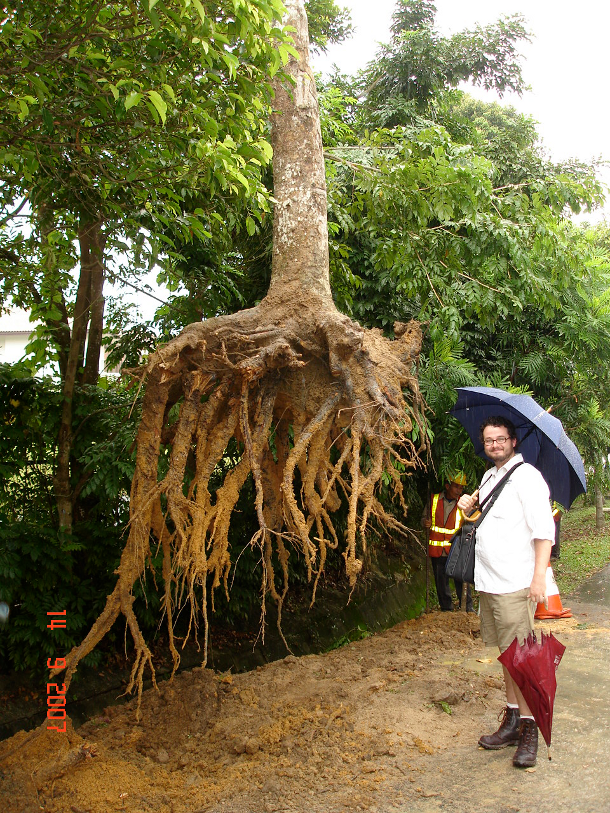




Thanks for the interesting article. The photos included are somewhat misleading since what comes out of the ground in the situations shown are major roots. I’m guessing there are several more feet (and ultimately potentially hundreds or thousands of miles cumulatively) of small roots that get left in the ground. That would be a good follow up article – How many feet of roots cumulatively do trees have?
It’s true that many smaller, more delicate roots won’t make it out intact when a tree falls over. These photos are more useful as an illustration of how deep tree roots will grow under the proper conditions. I’m not sure how many cumulative feet of roots trees have; that’s a good question…
Interesting article: As a forestry student in the early 1960s we never delved that deeply into depth of roots (of course the pun is intended), but assumed they were “deep:”. As a Certified Arborist for the last 25 years I’ve been drilled into the “fact” that all root systems look like the typical “tip up” on a hard pan soil…about 2 feet deep at most…now in he last couple years we are all being retrained into howit “really is”….at last the truth shall make us free. Isn’t science andeducation wonderful!
Amazing how things change, it’s true. In the case of how deep tree roots grow, too many people are still stuck on the old “facts,” unfortunately…
Nice article. James Urban has definitely made his mark in the tree root world. Still, the article would have been greatly improved, and the photos infinitely more helpful if species names had been attached to the trees in the photos.
Question: I have a Norway Maple 80 years old and approx. 40 ft height, would anybody know how deep the roots would be for this tree. I am installing a new water line and it goes under the tree about 5ft down.
Thanks
Ya , but i think they may grow up 160 feet in search of water
Are olive trees typically deep rooted or not? A colleague here believes that olive trees are deep routed to allow them to grow in dry climates but my experience has been that they are shallow routed. What’s the experts opinion? Thanks.
My experience with olives is also that they tend to be shallow rooted, but I must admit to not being an expert on olives! I do know that roots will grow wherever they can find suitable conditions. So, while trees do tend to have certain rooting habits, you will see variation depending on the planting conditions. Sorry I can’t be more helpful!
Excellent post! Always happy to learn new things especially about trees. It’s amazing how roots can grow so deep. Thanks for sharing this!
Hi any one can answer, How deep the sandlewood root would be?
Im thanking to the authors of this article because it was very helpful to my research on roots and if i may i would like to copy some of the paragraphs of this article and i will assure you that your work will be acknowledge.